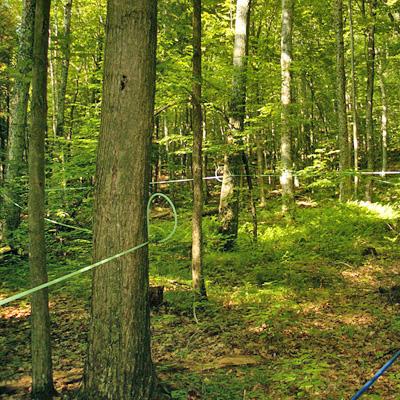Ecological Management for Sustained Maple Forest Health and Productivity

In New England, maple is an important source of income for family farms. A well-managed sugarbush is a unique ecosystem, producing maple syrup and providing rich habitat with significant environmental benefits, which can include forest biodiversity and carbon sequestration. Historically, sugarbushes were monocultures of sugar maples with large crowns. These sugarbushes produced sweeter sap per tree but were more vulnerable to pests and diseases, impacting long term health and sustainability of the stand.
NSRC researchers compared abundance and impacts of insect and disease pests between traditional management (90-100% sugar maple) and ecological management (25% of the basal area non-sugar maple). At nine sites (three each in USDA plant cold hardiness zones 3, 4, and 5) in New York, Vermont, and New Hampshire, researchers quantified pear thrips, maple leafcutter, sugar maple borer, maple trumpet skeletonizer, maple anthracnose, and eutypella canker incidence. Researchers estimated stand health based on tree crown transparency ratings. They determined carbon sequestration using a USDA carbon calculation tool. Researchers also surveyed sugarmakers' attitudes towards non-traditional sugarbush management.
Increased tree species diversity in sugarbushes using ecological management significantly reduced presence and impact of sugar maple insect and disease pests. Differences were similar across cold hardiness zones and sites but not always by year due to normal yearly fluctuations in pest populations. Surveys indicated that sugarmakers favored the new management style if their trees were healthier and lived longer. There was no connection between stored carbon and increased stand biodiversity, but maintaining a biologically diverse forest reduces pest damage to maple, benefits wildlife, and may strengthen forest resistance to climate change.
